|
|
A-10 Warthog Fighter Flight (x2) (TUSBX06)
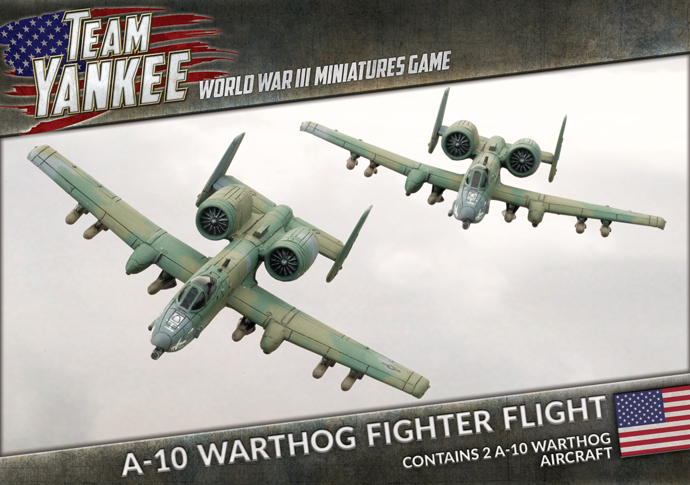 |
A-10 Warthog Fighter Flight
(TUSX06)
Includes two resin A-10 Thunderbolt II 'Warthog' aircraft, two plastic flight stands with tall stems, four rare-earth magnets, one decal sheet and one Unit Card.
Although its official designation is the Thunderbolt II, the rather odd-looking A-10 is commonly, if unflatteringly, known as the ‘Warthog’.
This product is no longer available
Designed by Evan Allen.
Painted by Aaron Mathie.
|
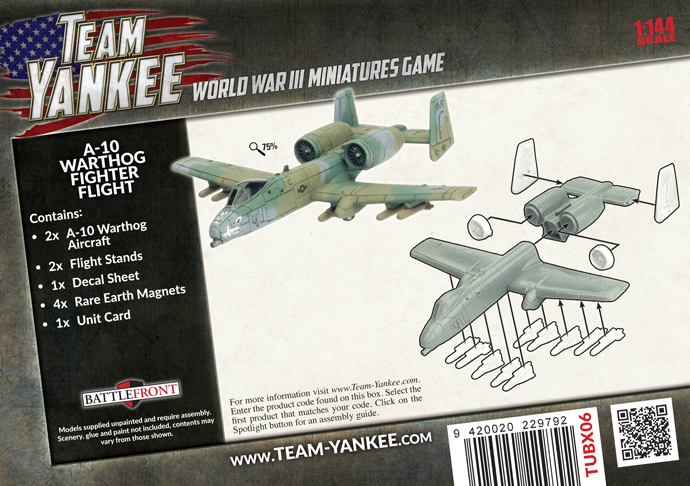 |
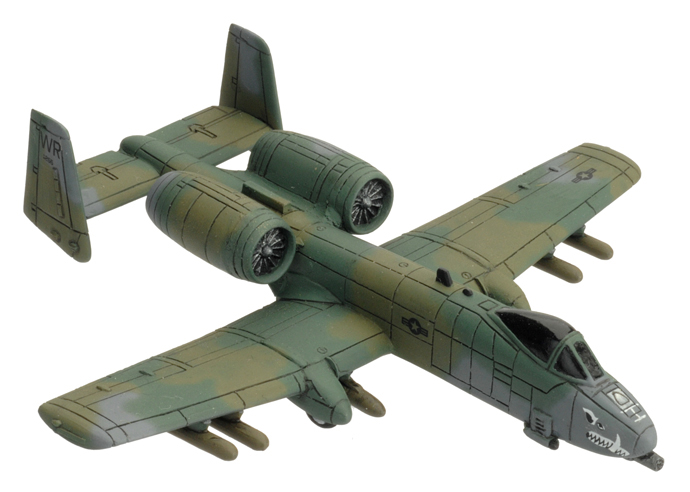 |
| The A-10 is built around a massive 30mm GAU-8/A Avenger seven-barrelled Gatling gun that fires depleted uranium rounds, and in its tank-busting role, carries TV-guided Maverick missiles. On top of that, its armoured cockpit and high-mounted engines give it outstanding resilience when hit by enemy fire. |
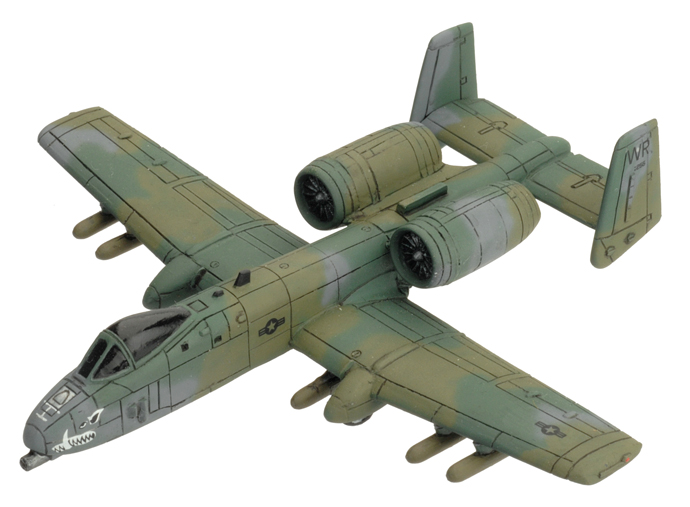 |
Strike Aircraft
The air force has many tasks across the breadth and depth of the enemy forces. Your battle is just one small part of the big picture to them, so the aircraft supporting you will often be called away to more urgent tasks.
At the start of each turn, the player rolls a die. On a score of 4+, the Strike Aircraft Unit arrives and will be placed anywhere on table in the Movement Step (or may Loiter in safety off the table, see page 30). If the Strike Aircraft Unit is held in Reserve, do not start rolling until the Unit arrives from Reserve.
The Aircraft shoot as normal in the Shooting Step (after taking Anti-aircraft fire from the enemy), and then (whether Loitering or not) are removed from the table at the end of the turn. Any casualties they suffer carry over when the Unit returns to the table.
|
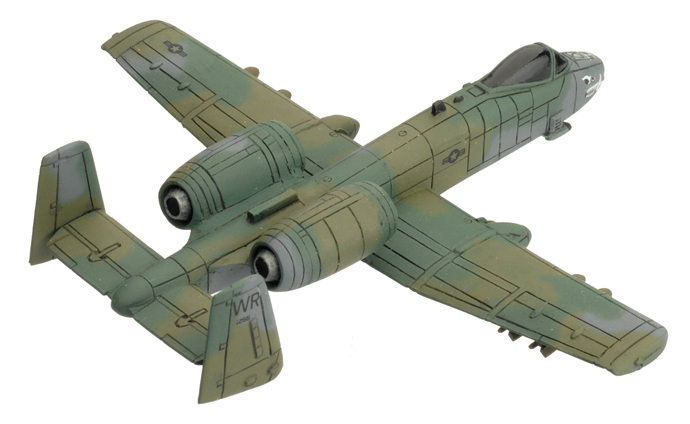 |
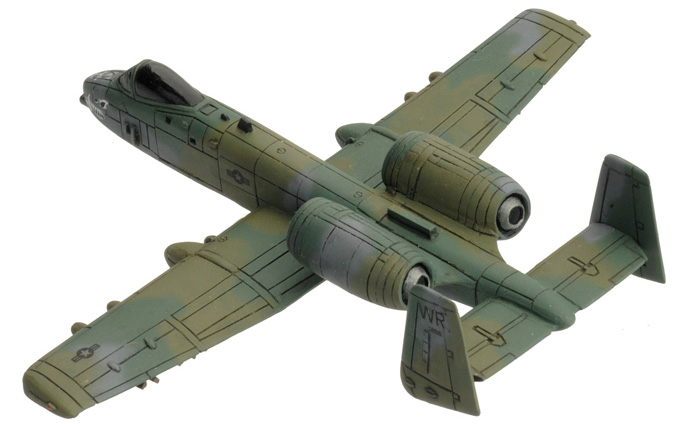 |
 |
| Crew: |
1 - pilot |
Weapon:
|
30mm GAU-8/A cannon |
| Weight: |
23 tonnes |
Armour:
|
Titanium bathtub |
| Length: |
16.25m (53') |
Speed: |
681km/h (423mph) |
| Wingspan: |
17.53, (57'6") |
Engines:
|
2 x TF34-GE-100A turbofans, |
|
 |
| The A-10 Warthog Fighter Flight in Team Yankee |
Weapon
|
Range
|
ROF
Halted Moving
|
Anti-tank
|
Firepower
|
Notes |
GAU-8/A 30mm
Gattling gun |
8"/20cm |
- |
4 |
11 |
5+ |
Anti-helicopter |
| Maverick missile |
8"/20cm-
37'/90cm |
- |
1 |
27 |
2+ |
Brutal, Guided, HEAT |
| CBU-52 cluster bomb |
6"/15cm |
SALVO |
2 |
6 |
One Shot |
|
 |
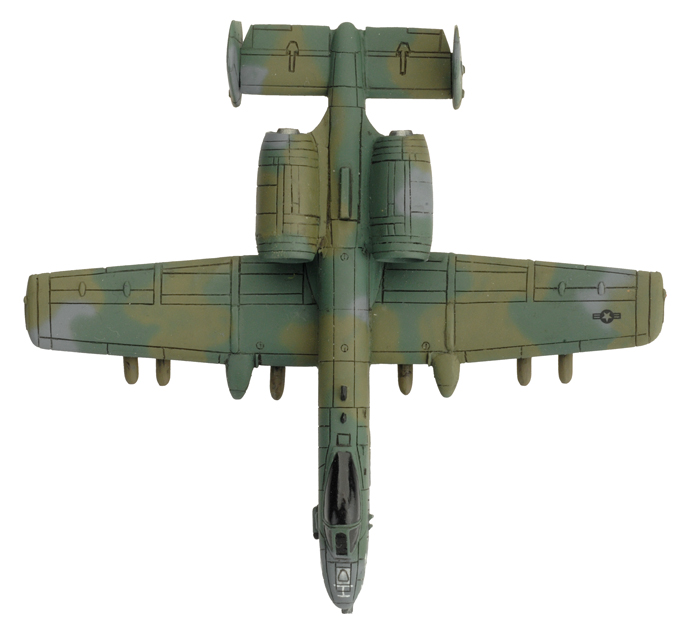 |
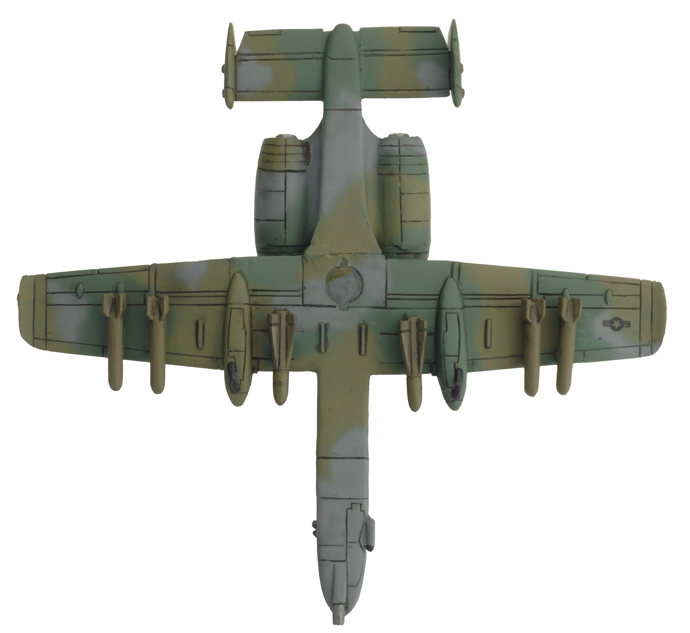 |
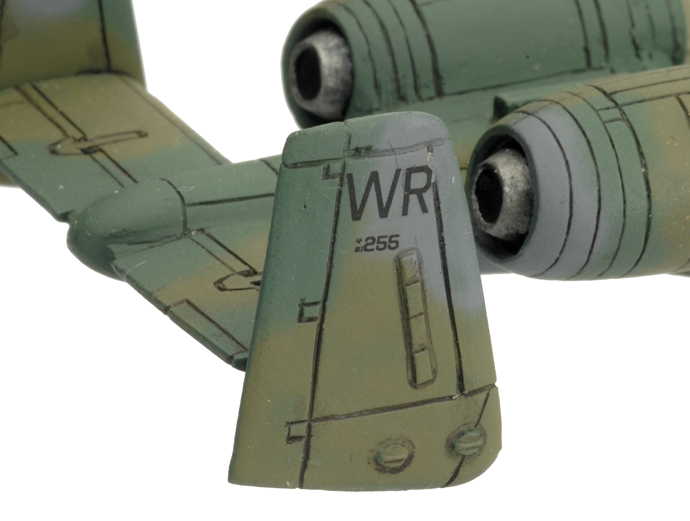 |
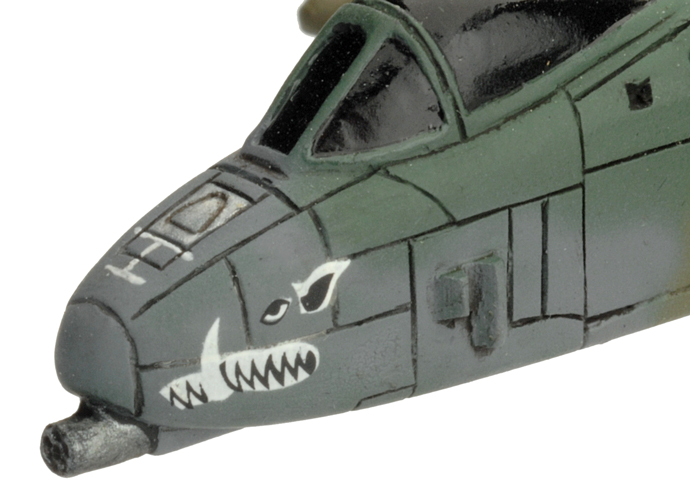 |
|
| A-10 Warthog Fighter Flight Contents |
|
If you're familiar with our resin and metal vehicle kits, you'll notice something different about the Warthog model - instead of metal, the weapons and engine turbofans are made from a high-quality polyester resin.
Compared to the heavier polyurethane resin used for the body of the aircraft, it is softer and more flexible, making it more resilient for the smaller parts. (You'll notice it is a paler grey colour). It feels a bit like the hard styrene of injection-moulded plastic models, but you need to use Super glue with it, because it won't 'melt' with plastic cement. It's a good material for aircraft parts, especially the under-wing weapons; being much lighter than metal, they are less likely to accidentally get knocked off during gaming.
|
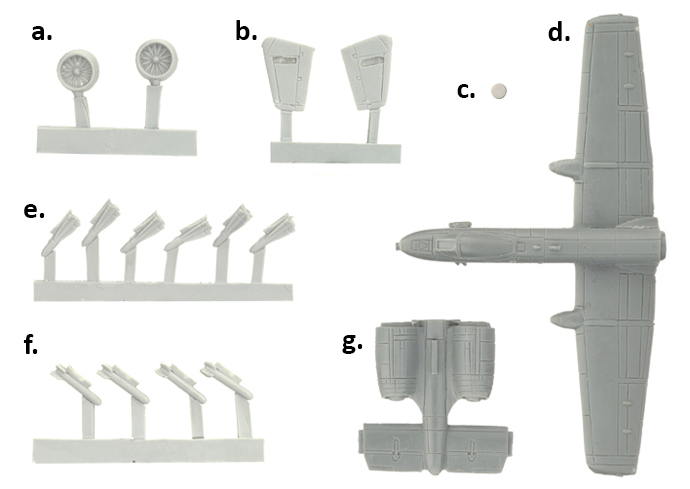 |
a. 2x Turbofan sprues.
b. 2x Vertical tail sprues.
c. 4x Rare earth magnets. |
d. 2x A-10 Warthog main body sections.
e. 2x Maverick missile sprues.
f. 2x CBU-52 cluster bomb sprues.
|
g. 2x A-10 Warthog rear sections. |
| Flight Stands (x2) |
Tall Flight Stand Stems (x2) |
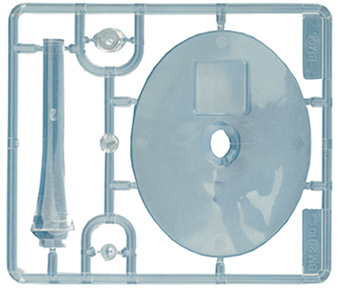 |
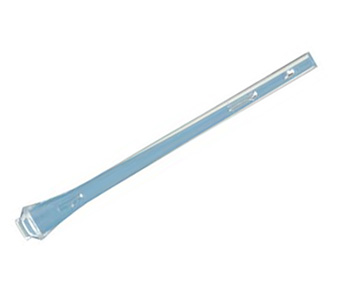 |
| Decal Sheet (x1) |
Unit Card (x1) |
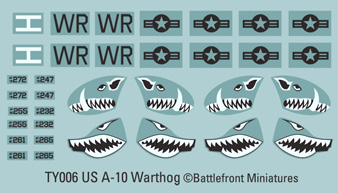 |
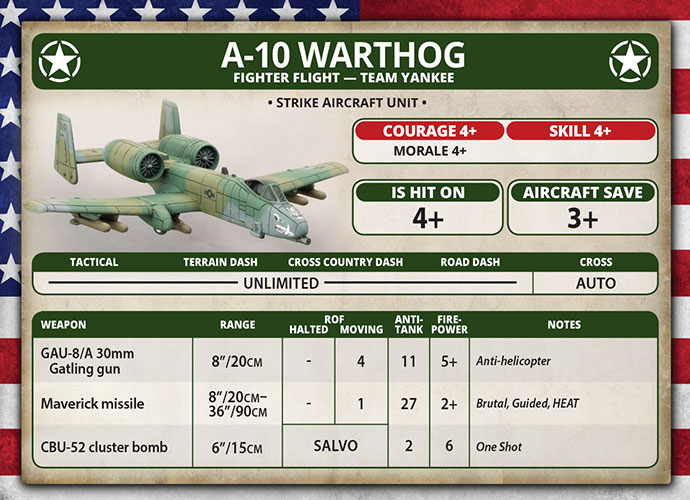 |
| Assembling the A-10 Warthog |
| Step 1. Start assembly by adding the turbofans to the rear portion of the A-10. |
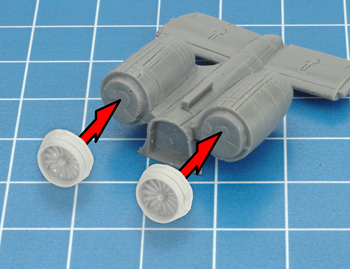 |
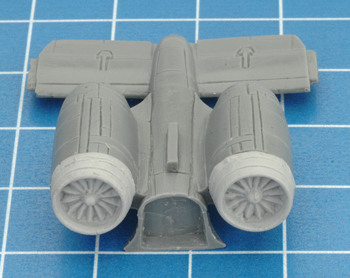 |
| Step 2. Finish the rear portion of the A-10 Warthog by adding the vertical tail piecess. Remember to dry-fit the parts before adding glue, in case you need to scrape off a small amount of resin off the tail notches to acheive a neat fit. |
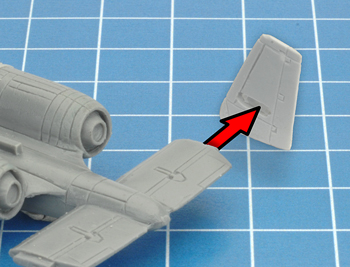 |
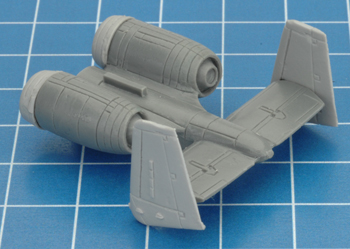 |
| Step 3. Now attach the front and rear portions of the A-10. Again, remember to dry-fit before adding glue. |
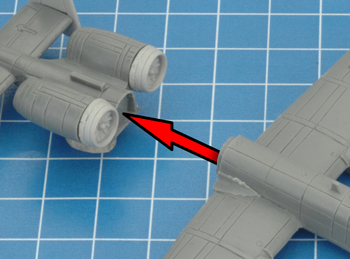 |
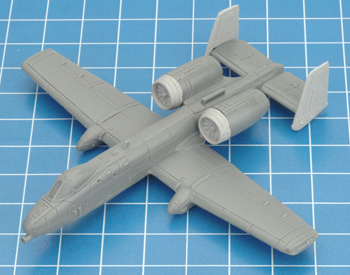 |
| Step 4. Time to add the ordnance! There are tabs along the bottom of the wings that the weapons easily fit into. |
Below: Maverick missile attached correctly. |
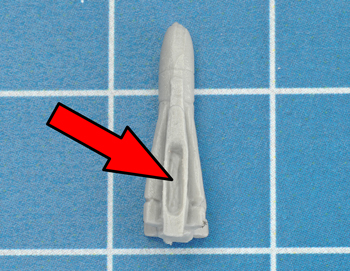 |
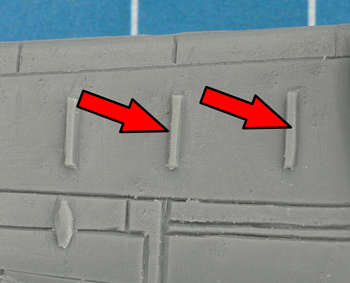 |
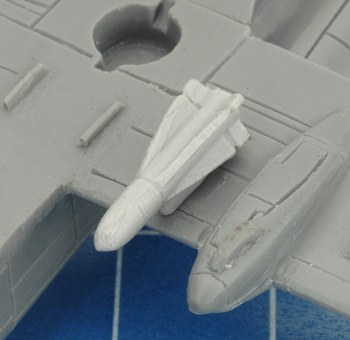 |
| Below: Here is the correct placement for the Maverick missiles and CBU-52 cluster bombs on your A-10 Warthog. |
 |
Assembling The Flight Stand
Step One
Cut the parts of the flight stand off the plastic sprue using a sharp hobby knife or a pair of hobby cutters. |
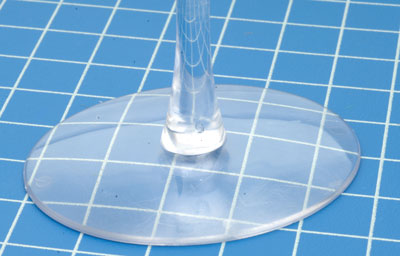 |
Step Two
Attach the stem to the flight stand base. The hard plastic of the flight stand will bond firmly with plastic cement, but you can also use superglue.
There are two sizes of stem; the standard practice is to use the shorter stem for helicopters and the tall stem for strike aircraft, to bolster the impression that they are flying at a higher altitude. But there's no reason you shouldn't use the tall stem for helicopters if you like how it looks.
Left:The stem attached to the base.
|
|
Step Three
Add the magnet cap to the top of the stem. The cap fits snugly to the top of the stem, so you will only need a small amount of glue to neatly secure the magnet cap in place.
|
Step Four
The cap has a recess to hold one of the supplied rare-earth magnets, to create a solid connection between the stand and the aircraft model. The tabs at the front and back help keep the aircraft pointing in the right direction. |
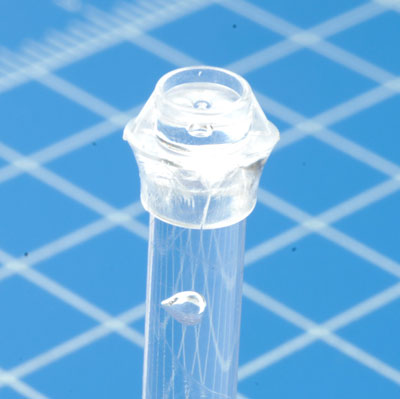 |
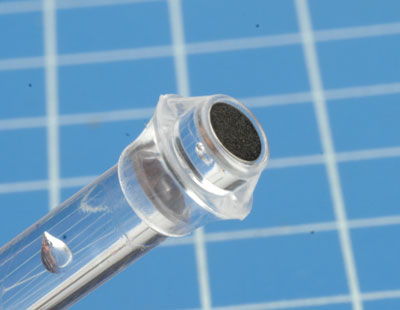 |
| 1. The bottom of the aircraft has a recess for a magnet and slots to match with the tabs on the cap. |
2. A second magnet is the glued into the recess, making sure the polarities match. |
3. Mated perfectly, the flight stand, aircraft and magnets create a solid, stable connection. |
| Below: An assembled A-10 Warthog on its tall flight stand. |
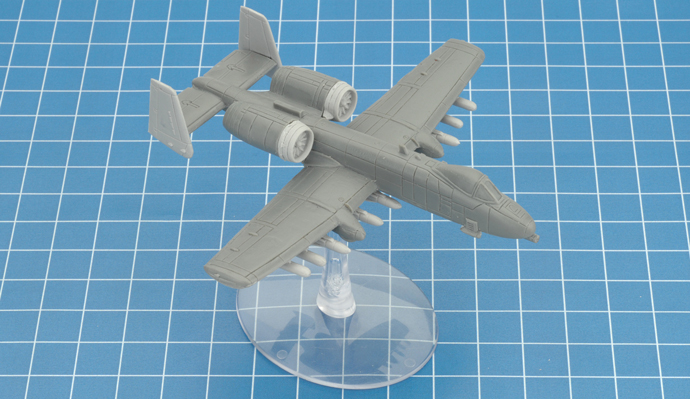 |
Last Updated On Monday, May 18, 2020 by Luke at Battlefront
|
|
|
 |
|